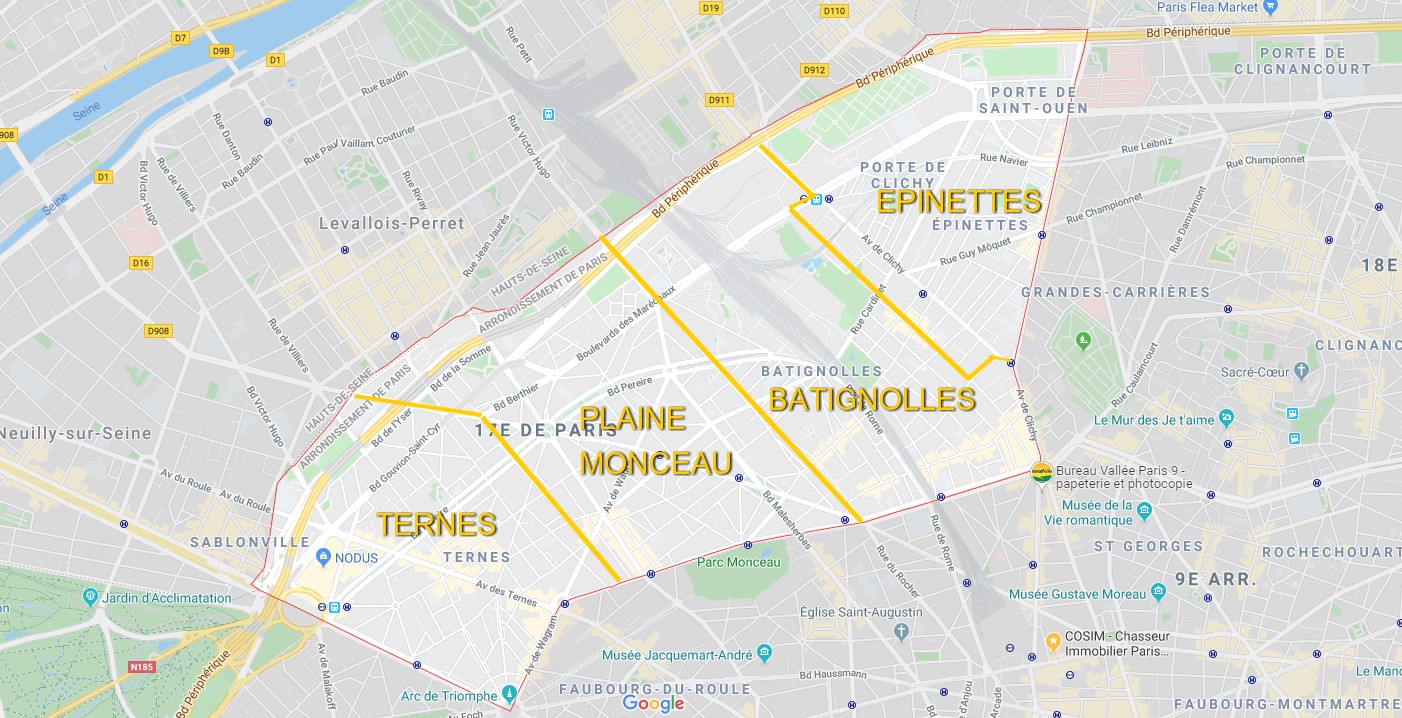The history of the 17th arrondissement is a history of villages before it became part of Paris in 1860 with the Thiers wall. In the 13th century, the modest village of Les Ternes was surrounded by forests (the ancient forest of Rouvray) and marshes. The construction of the Fermiers Généraux wall encouraged the development of this village around the barrier. The village of Monceau was a locality in the 9th century. Under the Ancien Régime, the Plaine Monceau was a hunting ground with few inhabitants, fewer than 500 at the end of the 18th century. It underwent little development until the arrival of the great Haussmann works. With its wide, open, often wooded streets, it is one of the arrondissements of Paris with the highest concentration of Haussmann buildings.
Batignolles used to belong to the commune of Clichy. It was developed under Napoleon 1st, with houses with small gardens and buildings for the more modest. Finally, at the edge of the 18th arrondissement, stretching from the Porte de Clichy to the Porte de Saint-Ouen, the hamlet of Les Épinettes appears to have been incorporated into the village of Batignolles. The Cité des Fleurs was created in 1847 as a result of the growth of a local railway company, to house engineers and company executives, as well as a crèche for employees. At the start of the 21st century, a vast development project was launched with the creation of the ZAC Clichy-Batignolles: it is organised around the Martin Luther King park and will see the construction of the Tribunal de Grande Instance de Clichy (High Court).

 Choose an arrondissement
Choose an arrondissement










